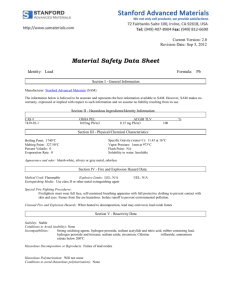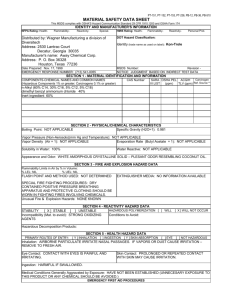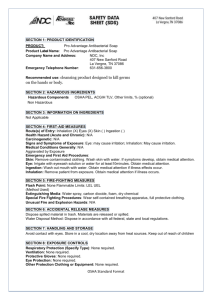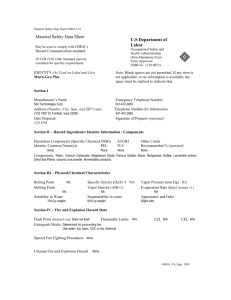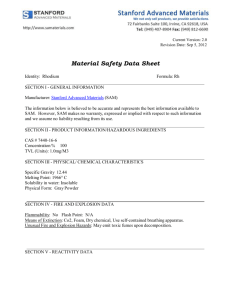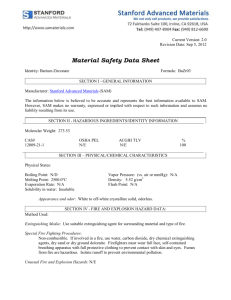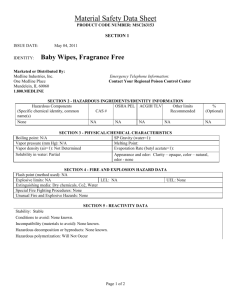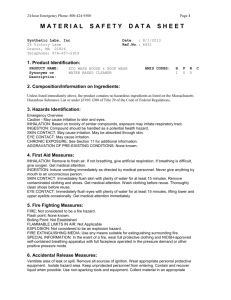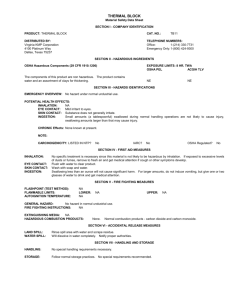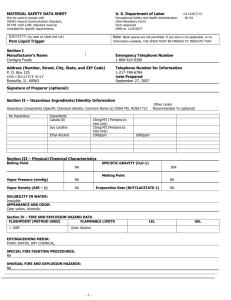Zinc Selenide (ZnSe) MSDS: Safety Data Sheet
advertisement
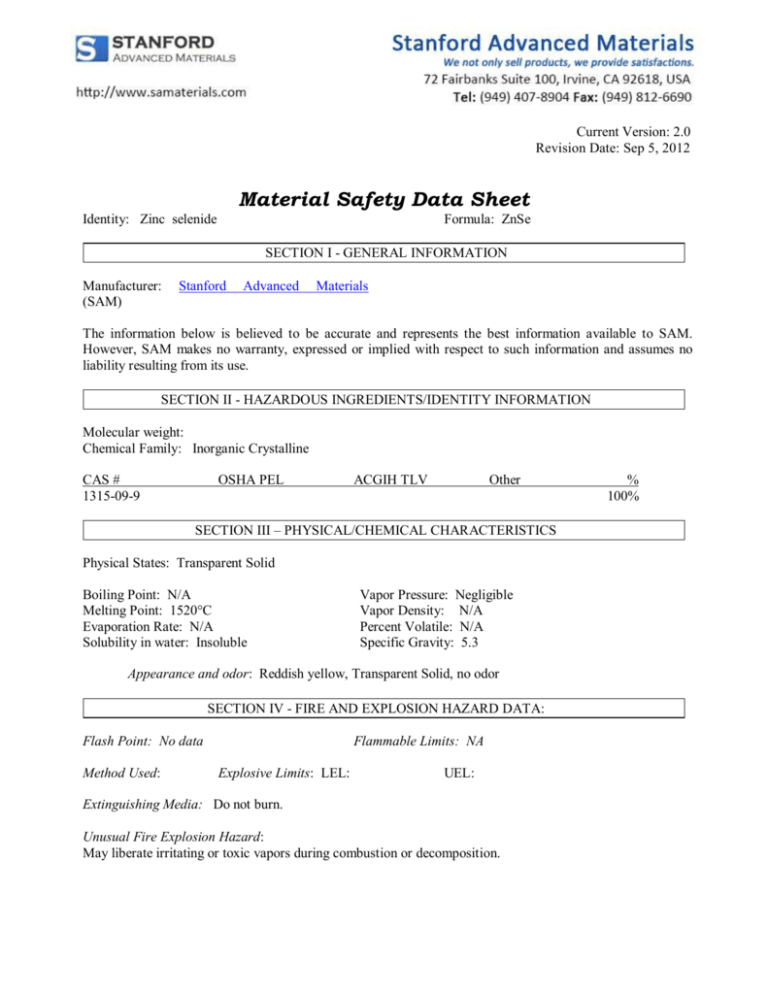
Current Version: 2.0 Revision Date: Sep 5, 2012 Material Safety Data Sheet Identity: Zinc selenide Formula: ZnSe SECTION I - GENERAL INFORMATION Manufacturer: (SAM) Stanford Advanced Materials The information below is believed to be accurate and represents the best information available to SAM. However, SAM makes no warranty, expressed or implied with respect to such information and assumes no liability resulting from its use. SECTION II - HAZARDOUS INGREDIENTS/IDENTITY INFORMATION Molecular weight: Chemical Family: Inorganic Crystalline CAS # 1315-09-9 OSHA PEL ACGIH TLV Other SECTION III – PHYSICAL/CHEMICAL CHARACTERISTICS Physical States: Transparent Solid Boiling Point: N/A Melting Point: 1520°C Evaporation Rate: N/A Solubility in water: Insoluble Vapor Pressure: Negligible Vapor Density: N/A Percent Volatile: N/A Specific Gravity: 5.3 Appearance and odor: Reddish yellow, Transparent Solid, no odor SECTION IV - FIRE AND EXPLOSION HAZARD DATA: Flash Point: No data Method Used: Flammable Limits: NA Explosive Limits: LEL: UEL: Extinguishing Media: Do not burn. Unusual Fire Explosion Hazard: May liberate irritating or toxic vapors during combustion or decomposition. % 100% SECTION V - REACTIVITY DATA Stability: Stable Conditions to Avoid: Acids, strong bases. Incompatibility (Materials to Avoid): Exposure to incompatible materials Hazardous Decomposition or Byproducts: Hazardous Polymerization: Will not occur Conditions to avoid (hazardous polymerization): Decomposition: If heated greater than 800°C, in an inert atmosphere, produces sublimation, products of zinc and selenium fumes. SECTION VI - HEALTH HAZARD DATA Routes of entry: Inhalation? Yes Skin? Yes Eyes? Yes Emergency and First Aid Procedures: Call physician immediately. Eye: Flush with water for 15 minutes. If irritation develops, call a physician. Skin: Remove contaminated clothing and shoes. Wash area with soap and water. Wash contaminated clothing before reuse. Inhalation: Remove to fresh air. If not breathing, give artificial respiration. Carcinogenicity: NTP? No OSHA Regulated? No Medical Conditions Aggravated by Exposure: SECTION VII - PRECAUTIONS FOR SAFE HANDLING AND USE Special Precautions: If airborne concentration exceeds limits, evacuate employees and ventilate area. Waster disposal Method: In case of spill or leakage: Dispose of in accordance with local, state, and federal regulations. Shovel or vacuum spilled product and place in closed container for further handling and disposal. SECTION VIII - CONTROL MEASURES Respiratory Protection: Dust respirator. Protective Equipment: Gloves, safety glasses with side shields. Work/Hygienic/Maintenance Practices: Implement engineering and work practice controls to reduce and maintain concentration of exposure at low levels. Use good housekeeping and sanitation practices. Do not use tobacco or food in work area. Wash thoroughly before eating or smoking. Do not blow dust off clothing or skin with compressed air. Please be advised that N/A can either mean Not Applicable or No Data Has Been Established

